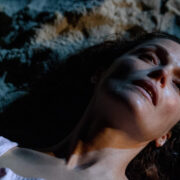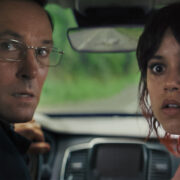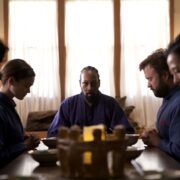MEET ME IN THE BATHROOM: Or, Maybe Not
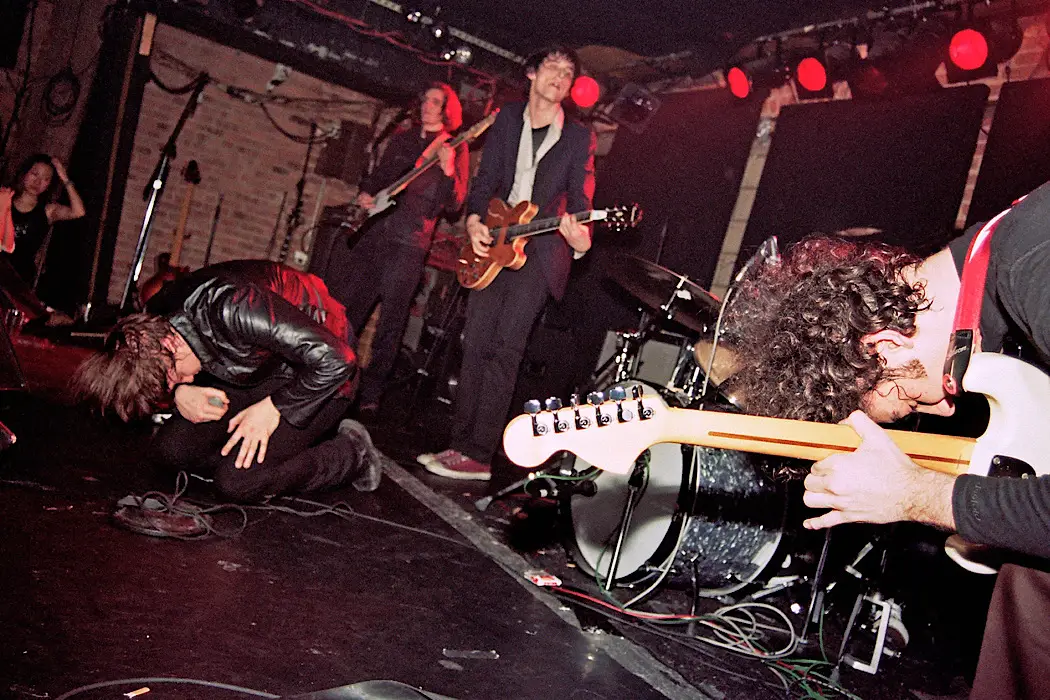
Lee Jutton has directed short films starring a killer toaster,…
Will Lovelace and Dylan Southern’s new documentary Meet Me in the Bathroom—inspired by Lizzy Goodman’s bestselling book of the same name—chronicles the ups and downs of the New York City music scene in the early 2000s. It’s an era that means a great deal to me, even though I am too young to have actually been there. When I was about fourteen years old, I was obsessed with The Strokes and Yeah Yeah Yeahs, two of the bands featured prominently in the film. I wanted to be Karen O and date Julian Casablancas; I settled for listening to their albums nonstop while dreaming of moving to the big city that spawned them.
By the time I made it to New York to attend college, the heyday of these bands and their peers—including Interpol, The Rapture, TV on the Radio, and LCD Soundsystem—was already in the rearview mirror. So you can imagine my excitement to live vicariously through this documentary, to finally experience the underground shows in gritty, grimy bars and the unbridled creativity spawned by actually being able to afford rent. Alas, I found Meet Me in the Bathroom to be a startling disappointment, a documentary that skates through history without telling us anything we don’t already know. If you were wondering what made that era special, you won’t really find answers here—which left me wondering if it was really even special at all.
Last Nite
Meet Me in the Bathroom kicks off on the eve of the new millennium when fears over Y2K were hanging heavily in the air. A duo calling themselves The Moldy Peaches were making a splash in the alt-folk scene that had sprung up in New York, while a group of five handsome, privileged young men called The Strokes were tearing up bars with their retro-inspired rock. A spunky young woman named Karen Orzolek shortened her last name and teamed up with a guitarist and a drummer to form the trio Yeah Yeah Yeahs; her outlandish makeup, tattered costumes, and energetic performances quickly became legendary in what was soon a thriving underground music scene, the likes of which New York hadn’t seen in decades and hasn’t seen since.
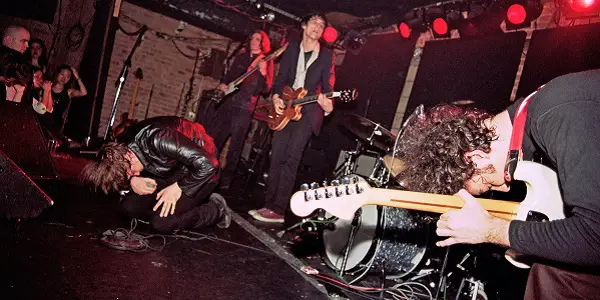
Meet Me in the Bathroom primarily utilizes archival footage, much of which is touted as never before seen; contemporary interviews are audio only, used to soundtrack clips of the various bands on stage, in airports, and on television. We hear members of Interpol talk about the failure of their first UK tour, where people were more interested in hearing if they knew The Strokes than their gloomy, moody music. We hear Karen O reflect on how hard it was to be a woman in a scene dominated by men, including photographers at gigs aiming their cameras at her crotch and interviewers asking her intrusive questions about her sex life. We hear Albert Hammond Jr. of The Strokes discuss the group’s hard-partying ways and disagreements over what direction their music should go in, just as they were reaching the peak of their fame—and the way that fame laid heavy on the head of Casablancas, whose desire for his music to be popular was in constant conflict with the fact that he never wanted to have such a glaringly bright spotlight shining on him.
Hard to Explain
This collage-like way of assembling a documentary relies on both the quality of the footage and the creativity of the filmmaker(s) piecing it all together in order to be truly effective. When that footage comes from David Bowie’s vibrant, kaleidoscopic career, and that filmmaker is Brett Morgen, the result is the masterful and meaningful Moonage Daydream. Perhaps I saw that film too soon before seeing Meet Me in the Bathroom; perhaps Moonage Daydream raised my hopes for what a music documentary could be too high, into the stratosphere.
In contrast with Morgen’s often abstract, always intriguing film, Meet Me in the Bathroom feels overly obvious in its narrative approach, especially considering that the time period it is telling us about is only twenty years in the past. Indeed, some of the archival footage used feels downright inappropriate in its obviousness. Personally, I was shocked by the decision to use certain clips of the World Trade Center collapsing on September 11th. One could have illustrated how that tragedy was formative for many of these artists in a more sensitive and symbolic way; using this disturbing footage instead feels lazy on the part of the filmmakers.
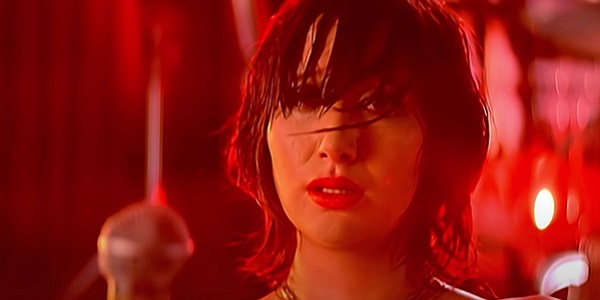
A large issue with Meet Me in the Bathroom is the way it focuses on a scene, and a number of artists in it, instead of any one individual band. A deeper dive into The Strokes or Yeah Yeah Yeahs could have been truly intriguing, but in its efforts to highlight so many other groups, the film doesn’t really tell us enough about any of them and how they all managed to develop such distinct, different sounds at a time when bands like Limp Bizkit were all the rage. If you are at all familiar with The Strokes, you already know that Casablancas is the son of the founder of Elite Models; Meet Me in the Bathroom spends only a brief moment contemplating how this privileged upbringing made Casablancas who he is. Anyone who has ever read a written profile of the man could have come to the same conclusion, and if you’re watching this film, you probably already have. Even if you aren’t already familiar with these artists, I can’t imagine that these surface observations would make you want to investigate further.
The most compelling moments in Meet Me in the Bathroom involve Karen O, mostly because of her unique perspective on events as a woman who constantly had to fight against sexism and objectification in order to be taken seriously. Her insane, borderline self-destructive stage persona at the start of her career stood in sharp contrast to who she really was, yet no one seemed interested in the quiet, introspective young woman behind the smeared eyeliner and screaming voice. Karen O’s reflections on coming to terms with this dichotomy, and figuring out a way to show her true self to the world before the need to keep up appearances destroyed her completely, are intimate and revealing in the way little of the rest of the film manages to be, content as it is to coast on millennial nostalgia for a time in which we at least had hope that someday we might be cool.
Conclusion
If all you want to do is go back in time and see these bands performing when they were at the peak of their powers, then Meet Me in the Bathroom certainly gets the job done. But I wanted something more and was left feeling unsatisfied—not to mention, extremely old.
What do you think? Are you familiar with the bands featured in Meet Me in the Bathroom? Share your thoughts in the comments below.
Meet Me in the Bathroom opens at the IFC Center in New York and the Los Feliz Theatre in Los Angeles on November 4, 2022. There will be one-night-only screenings in theaters nationwide on November 8, 2022. You can find more international release dates here.
Watch Meet Me in the Bathroom
Does content like this matter to you?
Become a Member and support film journalism. Unlock access to all of Film Inquiry`s great articles. Join a community of like-minded readers who are passionate about cinema - get access to our private members Network, give back to independent filmmakers, and more.
Lee Jutton has directed short films starring a killer toaster, a killer Christmas tree, and a not-killer leopard. Her writing has appeared in publications such as Film School Rejects, Bitch: A Feminist Response to Pop Culture, Bitch Flicks, TV Fanatic, and Just Press Play. When not watching, making, or writing about films, she can usually be found on Twitter obsessing over soccer, BTS, and her cat.






